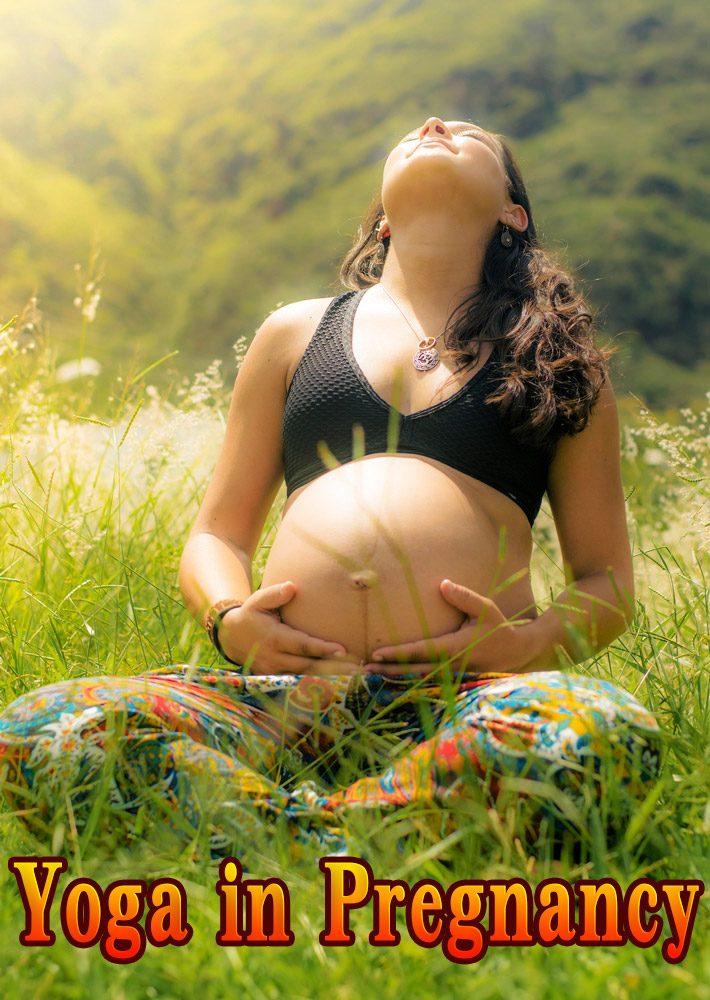
Yoga in Pregnancy
Yoga can be practiced anytime, anywhere, by anybody. And that definitely includes women who are pregnant. Yoga helps celebrate the unborn child nestled within its mother’s womb as Mom becomes more connected with her body and the new life within.
A steady practice of yoga while pregnant can result in relieving or eliminating common discomforts such as varicose veins, swollen feet and hands, leg cramps, backache, insomnia, tension, heartburn and fatigue. Strength and stamina are also achieved for the oncoming physical work of childbirth. A strong pelvic floor can ease constipation, hemorrhoids, and incontinence, as well as prolapsus (a downward fall of the pelvic organs). Kegles help to tone the pelvic floor by increasing blood circulation and muscle control in the area.
The breath is of utmost importance to the pregnant and laboring woman. A full breath ensures adequate oxygen is supplied to both mother and baby. It elevates the ability to manage pain and allows mom to save energy by learning how to relax certain muscles in the body. Tense muscles are working muscles and working muscles expend energy. During labor this energy is valuable and needs to be contained to be available during the pushing phase.
As each asana (posture) is performed, be sure to breathe fully. Inhale through your nose, bringing the breath to the lower regions of the lungs. Begin to fill the belly with your breath, then continue to pull the breath upwards into the intercostal (ribcage) area, and then finally fill the chest. Feel each area expand with the inhalation. Exhale slowly and fully, with control, allowing the navel to pull in towards your spine, both sides of the ribs to pull towards each other, and the collar bones to relax. A true yogic exhale is done through the nose, but during pregnancy you may prefer to purse your lips and exhale through the mouth. This breath is very beneficial during labor as well. The diaphragm is the major muscle of respiration and helps to contract the uterus during childbirth.
Yoga is about being present in your body. Be aware of how you are feeling during each breath and each asana. Continue only if it feels good and right for you. These postures are prepared with a healthy pregnant mom in mind. For more personalized or in depth practice, find a qualified, experienced prenatal yoga instructor in your area.
The pelvic floor is a hammock-like muscle which is attached to the hip bones, the tail bone and the pubic bone. It supports the pelvic organs and their contents.
There are three pelvic organs, namely the bladder, the uterus and the bowel, which lead to exterior openings. The bladder leads down to the urethra to accommodate the passage of urine, the uterus to the vagina, and the bowel to the rectum, which is the opening at the end of the large intestine. Each of these passages have surrounding muscles called sphincters. These sphincter muscles can be contracted separately or as a unit. Although, it does take time to learn how to tighten each muscle on its own, it can be well worth taking the time to achieve this goal. The following two Kegel exercises are excellent for providing the circulation needed in the perineum after birth to alleviate discomfort.
Wave
Tighten the pelvic floor muscles, from front to back, one sphincter muscles at a time. Squeeze first the urethra, then the vagina, then the rectum. Hold for a few moments, then release from rectum to urethra.
Elevator
Squeeze the bottom of the pelvic floor muscles together, pulling in and up, working your way to the top. Pretend they are going up an elevator to the fifth floor, stopping for a moment at each floor. When at the top, hold for 10 seconds or so, then release moving down the elevator, again stopping at each floor.
While strengthening and stretching the pelvic area, the Knee & Thigh Stretch also helps to relieve sciatica and varicose veins. It aids in opening the pelvis to accommodate the baby through the birth canal.
- Sit on your mat with your knees apart, legs bent and soles of the feet together
- Clasp your hands around your feet. Inhale directing your sitting bones into the mat and lengthening your spine upwards through to the crown of your head
- Exhaling, gently push your knees down towards the floor being careful not to torque the ankles
- Hold for 10 – 20 seconds and breathe
- Slowly release stretch
To help alleviate backache, which is one of the most common discomforts during pregnancy, the Reclining Knee Squeeze can do wonders. It also helps to improve flexibility in the hip joints and relieves gas, constipation, hemorrhoids, indigestion and varicose veins.
- Lay on your back with legs extended
- Inhaling, pull one knee in towards your chest
- Exhaling, hug the knee with both hands clasped around the knee. Feel your lower back press into your mat as your pelvis tips posteriorly
- Hold for 10 – 20 seconds and breathe
- Release on an exhalation
- Repeat with the opposite leg

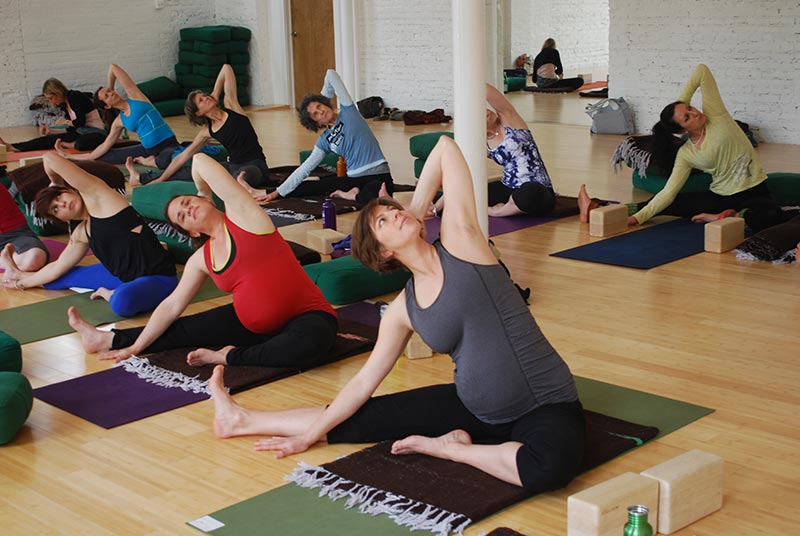
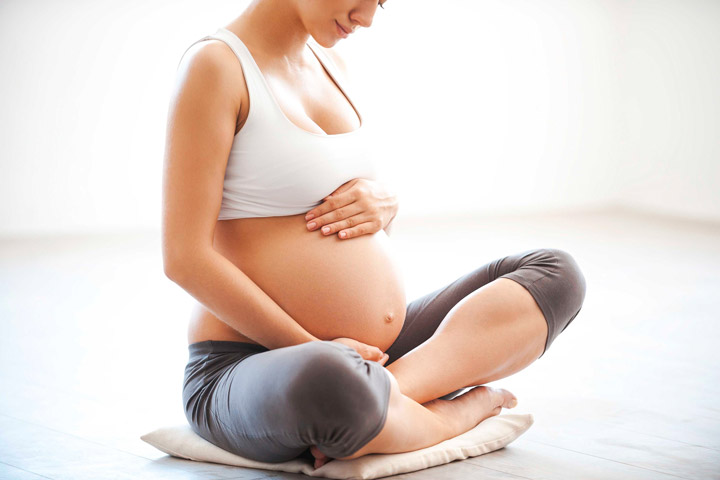
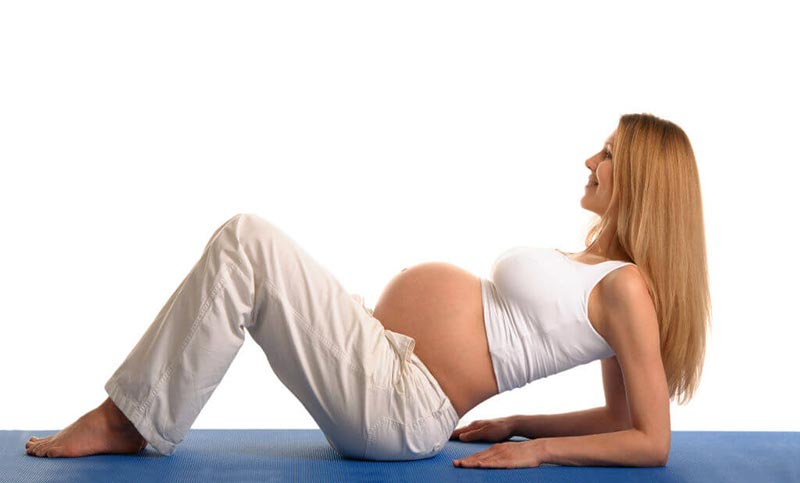
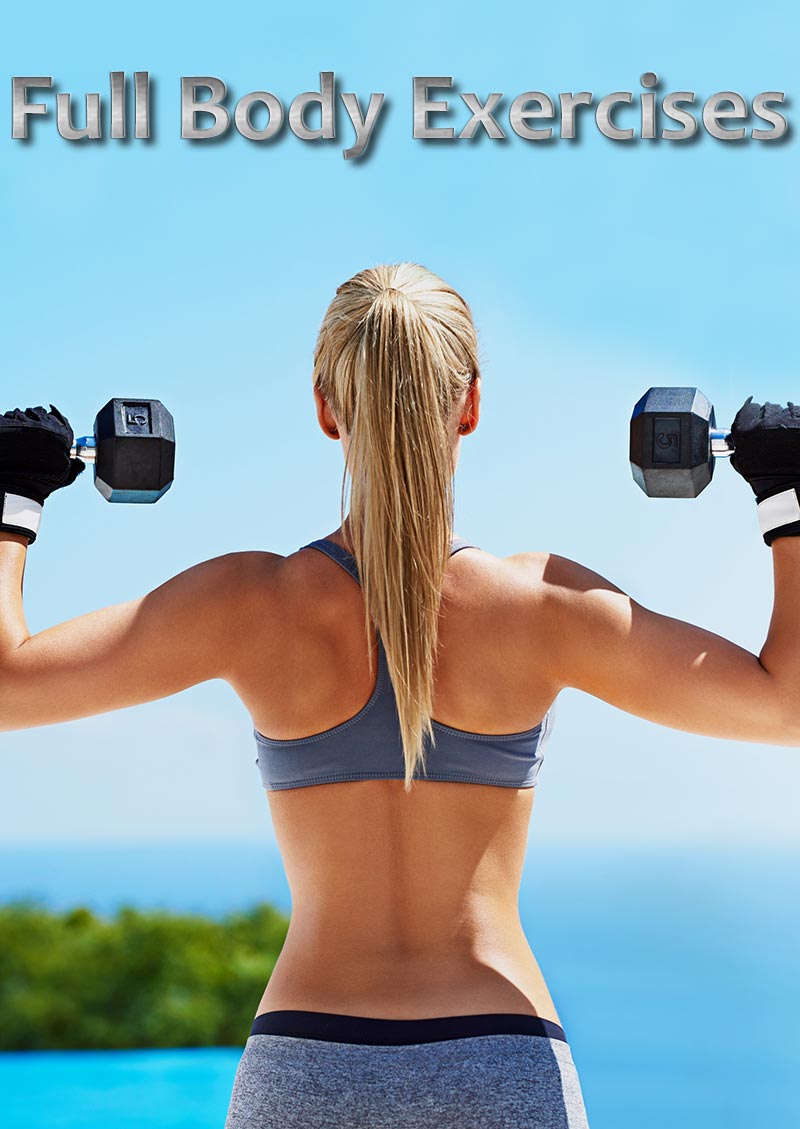


Leave a Reply